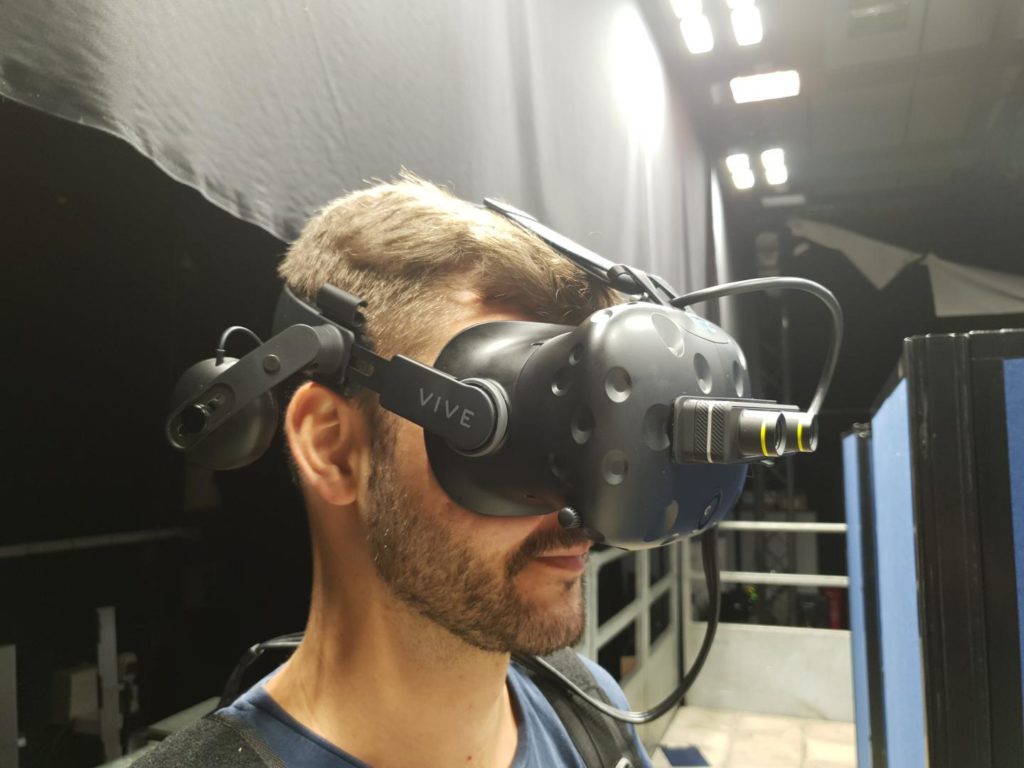Virtual/augmented reality devices can simulate some of the key difficulties experienced due to glaucoma, suggests new study from City, University of London.
CITY UNIVERSITY LONDON
Published today, during World Glaucoma Week 2020, a new study demonstrates how commercially available head mounted displays (HMD) can be used to simulate the day-to-day challenges faced by people with glaucoma.

Glaucoma is an umbrella term for a group of degenerative eye diseases that affect the optic nerve at the back of the eye. It is the leading cause of irreversible blindness worldwide, and is estimated to represent 11% of cases of serious sight impairment in the UK1.
The study, from the Crabb Lab, at City, University of London, suggests potential applications of the technology could include helping policymakers better assess the impact of visual impairment on patients, and helping architects to design more accessible buildings.
Twenty-two volunteers who did not have glaucoma took part in the study. Participants wore a HMD while performing various tasks in either virtual or augmented reality.
In the virtual reality task, participants were placed in a simulation of a typical, ‘cluttered’ house. Moving their eyes and head allowed them to look around it in order to find a mobile phone hidden somewhere in the house.
In the augmented reality task, participants navigated a real-life, human-sized ‘mouse maze’, which they viewed through cameras in the front of the HMD.
Sensors in the HMD tracked the position of the participant’s eyes, allowing the software to generate a blurred area of vision, known as a ‘scotoma’, that obstructed the same portion of their visual field, wherever they looked.
The scotoma was created using medical data from a real glaucoma patient, and either restricted vision in the upper part of the participant’s visual field, or in the bottom part. In ‘control’ trials the scotoma was absent.
Similar to real glaucoma patients, participants were slower to perform the tasks when the simulated impairment was present, and made more head and eye movements too. They likewise found the tasks particularly difficult when the vision loss obstructed the bottom part of their visual field. The results also showed how some people were better able to cope than others with an identical impairment.
The software the authors created to simulate the visual impairment (OpenVisSim) has been shared online for others to freely use and develop. It is compatible with most commercially available HMDs and smartphones, and supports a range of visual effects, designed to simulate the different symptoms associated with a range of eye diseases.
First author of the study, Dr Peter Jones, Lecturer at the Crabb Lab, City, University of London, said:
“While it’s impossible to recreate exactly what it’s like to have glaucoma, our findings suggest that digital simulators can at least allow people to experience some of the challenges that people with glaucoma face every day. We are now working with architects to explore whether sight-loss simulators can be used design more accessible buildings and transport systems.”
The study is published in the online journal, npj Digital Medicine.
Notes to editor
Contact details:
To speak to Dr Peter Jones contact Senior Communications Officer, School of Health Sciences, Shamim Quadir: Tel: 0207 040 8782 email: [email protected].
Alternatively, contact the City, University of London Press Office t [email protected] or on 020 7040 8788.
The study was funded by Moorfields Eye Charity (https://moorfieldseyecharity.org.uk/) and Fight for Sight (UK) (https://www.fightforsight.org.uk/)
Reference:
- Quartilho, A., Simkiss, P., Zekite, A., Xing, W., Wormald, R. and Bunce, C., 2016. Leading causes of certifiable visual loss in England and Wales during the year ending 31 March 2013. Eye, 30(4), p.602.

Leave a Reply